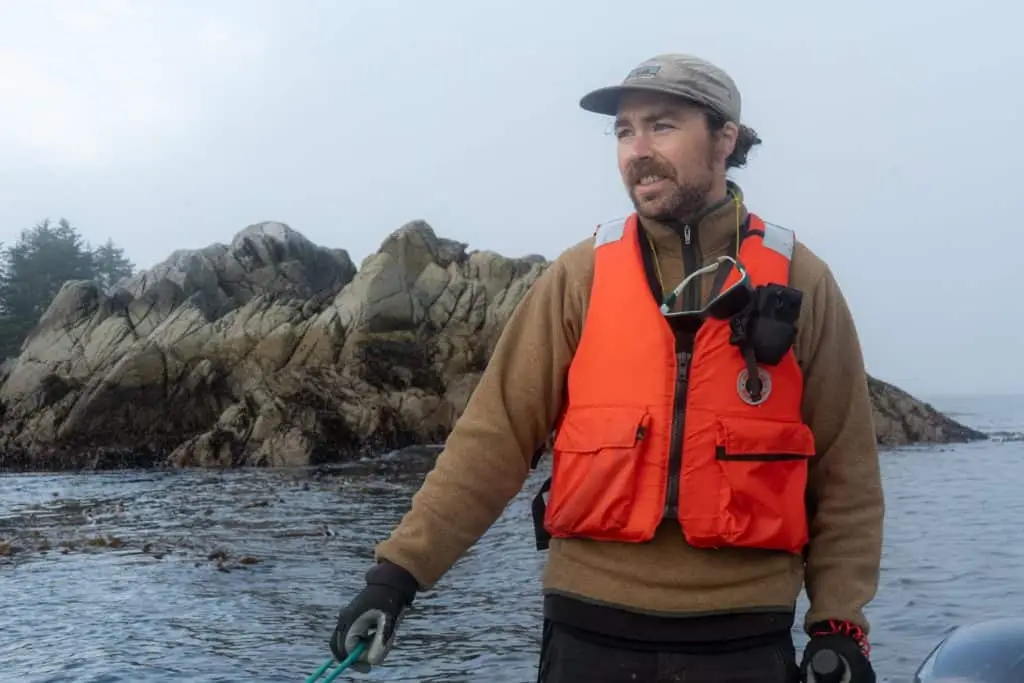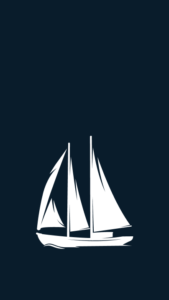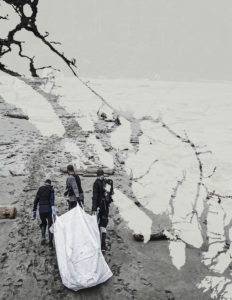
MDRI 2020 – What We Removed, Take-Home Messages, and Gratitude
On September 28th, 2020, 46 days after departing from our home port on southern Vancouver Island, and after logging more than 1200 nautical miles (~2200 km), the schooner Passing Cloud and Outer Shores crew departed from Port Hardy for the final leg of our journey home following the Small Ship Tour Operators Association’s Marine Debris Removal Initiative (MDRI) in the Great Bear Rainforest. Over the next few days, as we travelled home, we time to reflect upon and discuss all that we had experienced and accomplished over the previous six weeks.

What We Found and Removed
At the outset of our project, we really didn’t know how much marine debris we’d manage to collect, weigh, categorize, and lift off the shores of the outer coast of the Great Bear Rainforest. Based on previous clean-up initiatives on Vancouver Island, we estimated that we’d collect between 25 and 30 metrics tons of marine debris. As our work progressed we had soon far exceeded any expectations that we may have had. Collectively, our crews had filled nearly 800 helicopter lift bags full of marine debris, amounting to a total collection of nearly 130 metric tons. Especially considering the amount of carrying, cutting, dragging, and digging that can go into filling a single lift bag, this is an enormous accomplishment and testament to the hard work and determination of our crews. However, we also knew that we had put just a small dent into the total amount of marine debris that remains along our shorelines. And, more debris continues to arrive with the steady flow of the North Pacific Current from the western Pacific Ocean to the shores of Alaska, British Columbia, Washington, Oregon, and California.

One of our crew, Mat Janeway, put it best when he said “I realize now that this MDRI was not about how many metric tons of debris we’ve collected and removed. Instead, it’s about telling people, and governments, about what we’ve seen out here, and not only finding ways to clean it up, but stopping it from ending up, or even existing, in the first place.” Well said, Mat. And, it’s for exactly this reason that we put so much effort into estimating and recording the types and sources of all the various forms of debris we collected.

Over the weeks ahead we’ll be analyzing these data to include in our final report to the government; however, broadly speaking, it’s clear what the predominant forms of marine debris are: 1) Commercial fishing gear (floats, lines, and nets, of all shapes and sizes); 2) Styrofoam/Polystyrene Foam (from tiny fragments to huge chunks the size of a queen-sized bed, used for fishing floats, and floatation for docks); and 3) Plastic beverage bottles (water and other beverage bottles). With respect to fishing gear, it’s also clear that much of it is coming from the western Pacific (particularly Japan, Korea, and China), as indicated by the hard plastic floats or “dragger balls” (used to hold open the entrance of trawl nets), that we found on every single beach we visited.

But, the commercial fishing gear that is so ubiquitous along our shores is not only from international fisheries – a high proportion is also coming from domestic fisheries. The most obvious example of this is lost gear from commercial Dungeness crab fisheries, a fishery well-known for frequent entanglement events with large baleen whales. On virtually every outer coast shoreline our crews visited, we found the distinctive floats and lines of this fishery, usually in tangled masses of blue polysteel line and a few floats. Conveniently, the California, Oregon, and Washington Departments of Fish and Wildlife (e.g., ODFW), require fishers to label their gear with rubber tags that include the year, vessel name, owner name, and even phone number. Many of the tags we found were recent, from 2017 and 2018, but some dated back as far as 2003. Given how much of this gear we found, we couldn’t help but wonder at the total amount that arrives on our coast each year, and the risks it poses to coastal wildlife.

Our Thanks and Next Steps
It’s hard to grasp the magnitude and urgency of the global issue of marine plastic pollution and microplastics. Recent estimates of the total amount of plastics in our oceans, globally, are now in the trillions of tons. And microplastics (particles and fibers of plastics less than 5 mm in length), are now found everywhere in the world’s oceans, from the bottom of deep-sea trenches to estuaries in the Great Bear Rainforest.

The good news, perhaps, is that this issue is rapidly gaining international attention and the priorities and actions of governments and non-governmental organizations. On behalf of Outer Shores Expeditions, and the Small Ship Tour Operators Association, and all our employees and families, I want to extend our sincere appreciation to the Government of British Columbia for all the actions they are taking to address the issue of marine debris on our coast, including funding this Marine Debris Removal Initiative (MDRI) through the Clean Coast, Clean Waters Initiative Fund. I also want to thank all of the First Nations, and provincial and federal ministers, assistants, and organizations who worked with us along the way to make this project become a reality.
In terms of next steps, as mentioned previously, over the weeks ahead we’ll be compiling and analyzing the composition/source data we collected during the MDRI, and preparing our final report to government. Although we’re still early in this process, already a number of possible future initiatives have already come to light, which I look forward to pursuing and communicating further in the months ahead.
Thank you for your interest in this series of MDRI blog posts, and for joining us on this journey!






